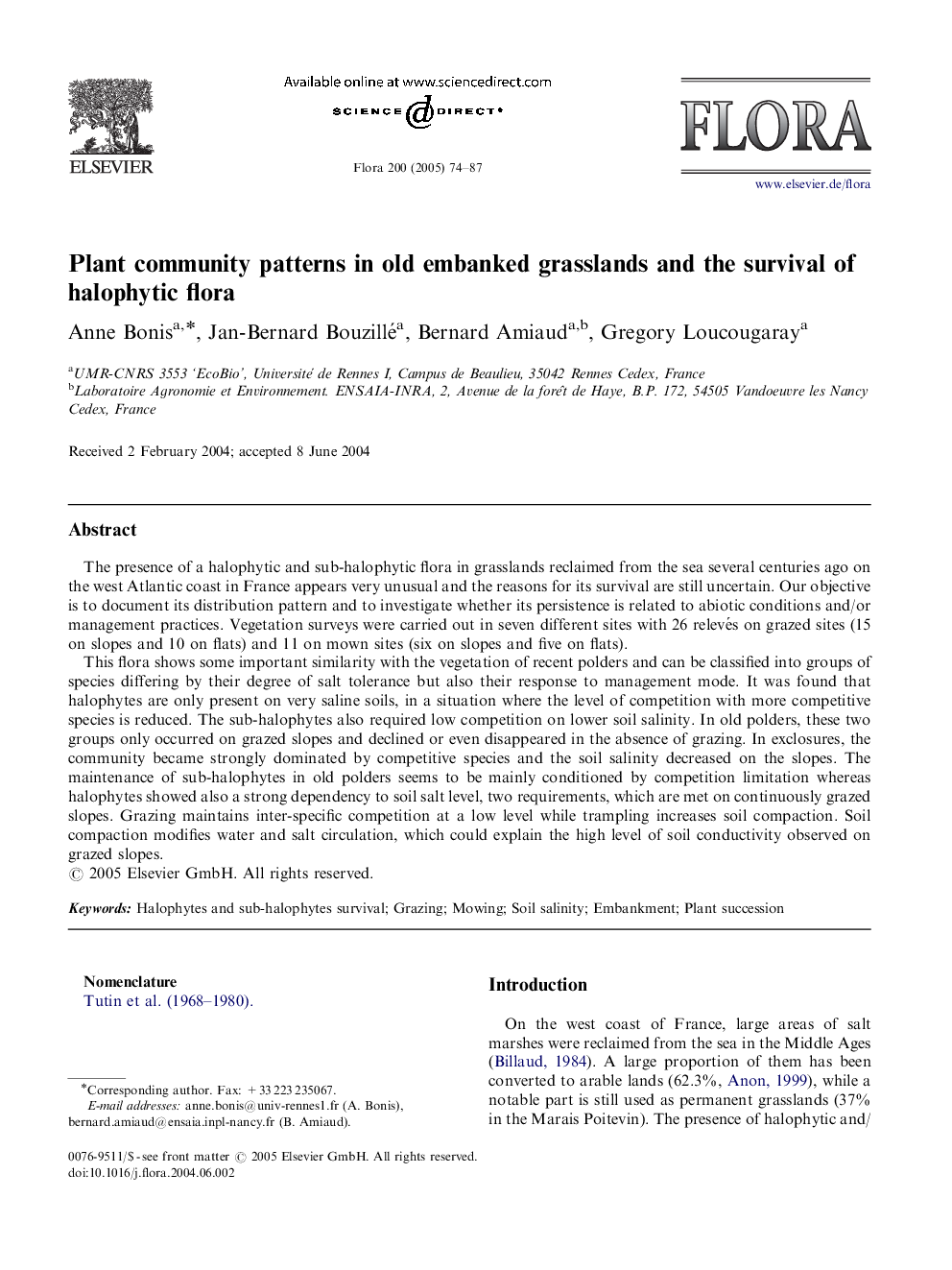| Article ID | Journal | Published Year | Pages | File Type |
|---|---|---|---|---|
| 10939266 | Flora - Morphology, Distribution, Functional Ecology of Plants | 2005 | 14 Pages |
Abstract
This flora shows some important similarity with the vegetation of recent polders and can be classified into groups of species differing by their degree of salt tolerance but also their response to management mode. It was found that halophytes are only present on very saline soils, in a situation where the level of competition with more competitive species is reduced. The sub-halophytes also required low competition on lower soil salinity. In old polders, these two groups only occurred on grazed slopes and declined or even disappeared in the absence of grazing. In exclosures, the community became strongly dominated by competitive species and the soil salinity decreased on the slopes. The maintenance of sub-halophytes in old polders seems to be mainly conditioned by competition limitation whereas halophytes showed also a strong dependency to soil salt level, two requirements, which are met on continuously grazed slopes. Grazing maintains inter-specific competition at a low level while trampling increases soil compaction. Soil compaction modifies water and salt circulation, which could explain the high level of soil conductivity observed on grazed slopes.
Related Topics
Life Sciences
Agricultural and Biological Sciences
Ecology, Evolution, Behavior and Systematics
Authors
Anne Bonis, Jan-Bernard Bouzillé, Bernard Amiaud, Gregory Loucougaray,
